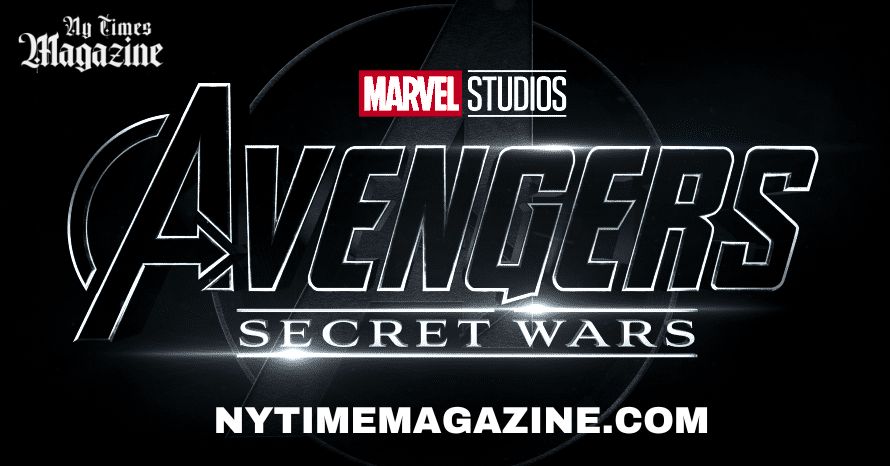The Multiverse Saga pulsates with anticipation, its crescendo approaching with the thunderous promise of “The Kang Dynasty” and “Secret Wars.” These titles, pregnant with iconic adversaries and cosmic clashes, have ignited fan fervor for years. But a tantalizing rumor snakes its way through the shadows, hinting at a seismic shift in Marvel Studios’ masterplan. Could these two tentpoles, originally envisioned as separate cinematic titans, merge into a single, universe-shattering masterpiece?
The very notion seems audacious. The initial blueprint laid out distinct chapters, mirroring the “Infinity War”/”Endgame” saga that reshaped cinematic storytelling. Yet, beneath the surface, compelling arguments dance, urging us to consider the narrative symphony that could arise from a bold fusion. Let us, then, embark on a thought experiment, dissecting the possibilities, weighing the challenges, and contemplating the potential impact of such a cinematic gamble.
Contents
Kang’s Orchestrated Chaos: A Villain Unbound
At the heart of this potential synergy lies Kang the Conqueror, the saga’s maestro of multiversal mayhem. Jonathan Majors’s chilling portrayal has already cemented Kang as a villain of unparalleled complexity and power. Unlike Thanos, fixated on a singular Infinity Gauntlet, Kang’s ambitions span realities, his variants a hydra of chaos slithering across timelines.
Segregating his villainy across two films risks diluting Kang’s impact. A combined narrative, however, grants him the focus he deserves. Imagine, instead of fragmented glimpses, witnessing Kang’s full tapestry of conquest unfold. We see him manipulating timelines, pitting heroes against variants, orchestrating a symphony of multiversal destruction. This narrative density elevates Kang to a true Thanos-level threat, a force whose machinations reverberate across realities, his every move pregnant with apocalyptic possibilities.
From Skirmishes to Symphony: Battlefields Collide
Beyond Kang, consider the sheer scale of these stories. “The Kang Dynasty” promises an Avengers team facing an onslaught of variants across realities. “Secret Wars” envisions a battleground where universes crumble against one another. Separating these conflicts risks diminishing their grandeur. However, merging them creates a cinematic spectacle unlike any witnessed before.
Picture it: heroes grappling for survival amidst collapsing realities, cosmic powers clashing as timelines bleed into one another. Imagine familiar faces locked in unthinkable conflicts, forced to choose between loyalty and existence itself. Such a combined narrative becomes a canvas for grander battles, deeper stakes, and a truly universe-spanning war unlike any the MCU has dared to contemplate.
Weaving a Tapestry of Time: Creative Challenges Arise
Of course, such a monumental undertaking wouldn’t be without its hurdles. Weaving two distinct narratives into a cohesive whole demands storytelling dexterity. Pacing will be crucial, ensuring a satisfying escalation without sacrificing character development or emotional arcs. Balancing the spotlight between multiple heroes and realities poses another challenge. One misstep could leave some heroes relegated to footnotes, their sacrifices unfelt.
Furthermore, condensing years of planned storylines into one film necessitates careful pruning. Certain plot threads or character arcs might fall victim to the editing room floor. Striking the right balance between epic spectacle and emotional intimacy will be key to ensuring this supersized narrative doesn’t lose its human touch.
The Unified Vision: Merging ‘The Kang Dynasty’ and ‘Secret Wars’
Weaving a Cohesive Narrative Tapestry
Combining ‘Avengers: The Kang Dynasty‘ and ‘Secret Wars’ into a single cinematic experience necessitates a meticulous approach. The narrative arc must seamlessly interlace the themes of time, multiverse, legacy, and survival. The film’s structure would demand an intricate balance between character development, action sequences, and emotional resonance.
Embracing Complexity without Compromise
The challenge lies in maintaining the complexity of the story without overwhelming the audience. Strategic storytelling devices, character-driven arcs, and clear exposition would be vital in navigating the intricate web of timelines and multiversal conflicts.
Impact Beyond the Big Screen: Redefining Cinematic Storytelling
If successful, merging “The Kang Dynasty” and “Secret Wars” could redefine superhero storytelling. It would be a bold statement, demonstrating Marvel’s confidence in its narratives and its understanding of its audience’s insatiable appetite for larger-than-life experiences.
Furthermore, it could pave the way for new storytelling structures within the MCU. Imagine future sagas unfolding as interconnected miniseries culminating in epic crossover events. This “mini-saga within a saga” format could offer deeper character exploration, richer world-building, and an even more satisfying payoff for invested fans.
Of course, success hinges on execution. Should the combined narrative falter, the repercussions could be significant. Disgruntled fans, narrative inconsistencies, and a muddled mess of epic proportions are all potential pitfalls. The pressure on Marvel Studios would be immense.
A Gamble with Galactic Implications: Weighing the Scales
Ultimately, the decision to merge “The Kang Dynasty” and “Secret Wars” is a gamble with potentially galactic implications. The rewards, however, are equally breathtaking: a singular, universe-ending spectacle, a villain elevated to godhood, and a potential redefinition of cinematic storytelling within the superhero genre.
The whispers may just be rumors, but they carry the weight of a seismic shift. Whether Marvel Studios embraces this ambitious gamble or continues down the planned path, one thing is certain: the climax of the Multiverse Saga promises to be an event like no other, forever etched in the annals of cinematic history.
In conclusion, while the idea of merging “Avengers: The Kang Dynasty” and “Secret Wars” into a single film is captivating, realistic expectations are crucial. Marvel Studios’ dedication to crafting compelling narratives and delivering quality entertainment within the MCU is evident. However, logistical constraints, narrative coherence, and the need for a balanced focus on characters and visuals may impact the execution of such an ambitious project.
The Multiverse Saga’s climax hangs heavy in the air. Whispers swirl that “The Kang Dynasty” and “Secret Wars” might merge, weaving a tapestry of reality-shattering battles and a villainous Kang, redefined. This audacious gamble could redefine superhero storytelling, or crumble under its own weight. Whether they combine or stand alone, one thing’s certain: the MCU’s future shimmers with untold possibilities. Brace yourselves, for the saga’s conclusion will be etched in cinematic history, no matter its form.
The MCU’s evolution continues to surprise and delight audiences with innovative storytelling, and while a merged narrative remains speculative, Marvel’s commitment to pushing boundaries within the established framework remains a source of excitement and anticipation for fans worldwide.



